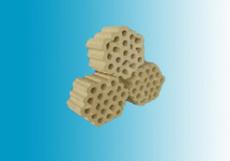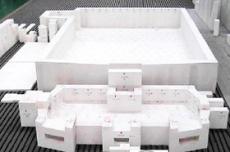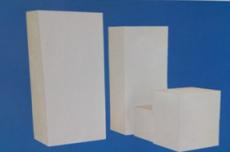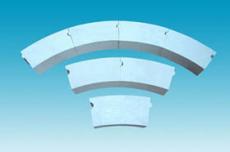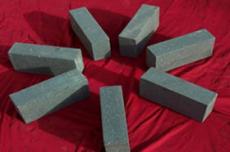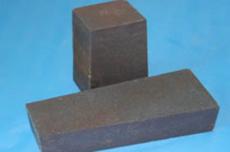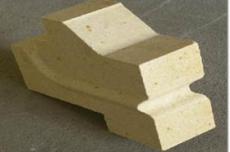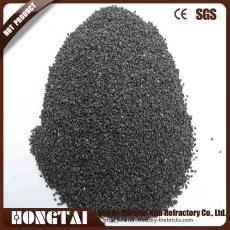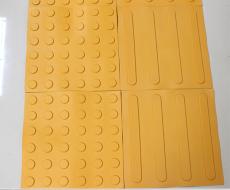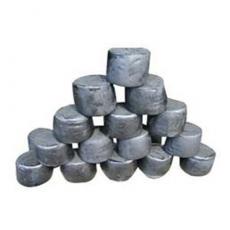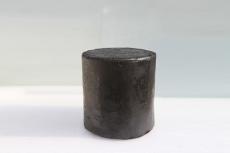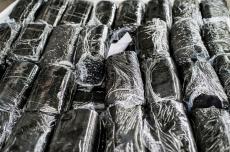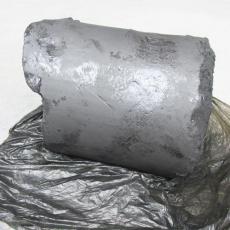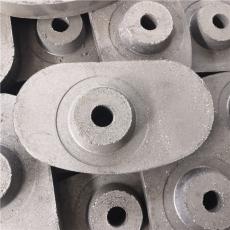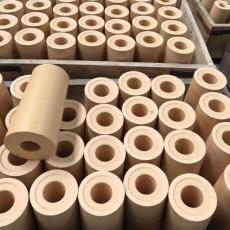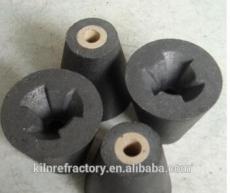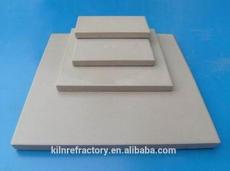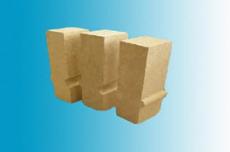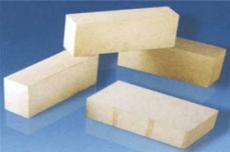
The structure of the small furnace has a decisive influence on the direction, speed, air-gas mixing degree and flame length of the flame. The preheating temperature of the air-gas and the amount of excess air determine the atmosphere of the flame and the combustion temperature of the flame. Therefore, the structure of the small furnace plays an important role in the heat transfer in the kiln and the melting process of the glass.
For melting furnaces burning liquid fuels, natural gas and coke oven gas, the structure of the small furnace is relatively simple, with only a small furnace outlet and a horizontal channel. For melting furnaces burning producer gas, in addition to the outlet and horizontal channel, the small furnace also has a pre-combustion chamber, a small furnace tongue, an air riser and a gas riser.
Exhaust outlet
The outlet is also called the fire outlet. It is the place where the flame is ejected into the kiln and the place where the exhaust gas is sucked out of the kiln. When the flow rate of air (and gas) and the combustion temperature of the flame are constant, the size of the cross-sectional area of the outlet determines the speed of the flame ejecting into the kiln and also affects the length of the flame. When the cross-sectional area of the nozzle is constant, the ratio of the length to the height of the nozzle determines the coverage area of the flame on the glass liquid surface.
Too large or too small a flame speed is not conducive to the normal progress of the melting process. If the speed is too large, the fuel will not have time to burn completely and will extend to the opposite small furnace, or even burn in the heat storage chamber, which is not conducive to the melting of the glass in the kiln, and it is easy to burn the opposite small furnace, heat storage chamber and lattice bricks. At the same time, if the flame speed is too large, the powder will be brought into the opposite small furnace, corroding the masonry of various parts of the small furnace and blocking the lattice body. If the flame speed is too small, the flame will float and be weak, which is not conducive to the heat transfer of the glass liquid and the batch material, and it is easy to burn the flat arch of the nozzle of the small furnace. In order to increase the flame coverage area, it is required to increase the width of the nozzle as much as possible. The cross-sectional area of the nozzle is often flat to meet the coverage area. Usually, the width of the nozzle is different according to the requirements of the temperature system in the kiln. For the melting furnace with 7 pairs of small furnaces, the widths of 1#, 2#, and 6# small furnaces are the same, the widths of the nozzles of 3#, 4#, and 5# small furnaces are slightly smaller, and the nozzle of 7# small furnace is the smallest.
The arch on the top of the nozzle is called the front flat arch of the small furnace; the walls on both sides of the nozzle are called the small furnace stack (also called the small furnace legs), and the small furnace hook bricks are below. Since the flame is sprayed into the kiln or the high-temperature gas in the kiln is discharged through the nozzle, the flame scouring and flying material erosion cause a bad use environment, so ordinary cast electric fused zirconium corundum bricks are used for masonry in various parts of the nozzle.
The distance between the nozzle and the liquid surface is generally expected to be as small as possible, so that the flame is close to the liquid surface, which is beneficial to heat transfer. Generally, the distance between the bottom brick of the nozzle and the glass liquid surface is 400~600mm.
Precombustion chamber
For the melting furnace burning producer gas, the small furnace space from the end of the tongue to the outer edge of the nozzle is called the precombustion chamber. After the preheated air and gas enter from the upper and lower parts of the tongue arch respectively, they meet in front of the tongue, diffuse and collide with each other to mix, burn to a certain extent, and spray into the kiln at a certain angle. In order to ensure that the gas can be completely burned in the kiln, the precombustion chamber plays a great role, so the length of the precombustion chamber (i.e. the distance of the mixed combustion of air and gas) also reflects the time of mixed combustion, which is an important structural indicator.
For the melting furnace that burns on the small furnace through the side insertion, top insertion or bottom insertion of the spray gun, the space in the small furnace is also called the precombustion chamber.
For the melting furnace that burns liquid fuel and natural gas through the bottom of the small furnace, the space in the small furnace is called the air channel.
The precombustion chamber (or air channel) is composed of the slope arch, the side wall of the small furnace and the bottom plate of the small furnace. The bottom plate of the small furnace is composed of bottom bricks, cast steel plates or orderly arranged channel steels; the horizontal thrust of the slope arch is borne by the tie rods between the I-beam columns on both sides of the small furnace. The structure of the precombustion chamber is an important factor in the organization of the flame of the whole kiln. The brickwork of the pre-combustion chamber is in contact with the high-temperature flame, so the slope arch and side walls use 33# ordinary cast fused zirconium corundum bricks, and the small furnace bottom bricks use 33# oxidation method non-shrinkage fused zirconium corundum bricks. The slope arch and side walls are insulated from the inside to the outside with zirconium sealing materials, high-aluminum insulation bricks and insulation coatings; the small furnace bottom is insulated from the inside to the outside with zirconium sealing materials and high-aluminum bricks; and there is a flat water bag for insulation below to reduce the operating environment temperature when checking and replacing the nozzle.
Small furnace down-angle
For the melting furnace burning producer gas, the angle between the small furnace slope arch and the horizontal plane constitutes the down-angle of the air stream, and the angle between the small furnace bottom plate and the horizontal plane constitutes the up-angle of the gas stream. The up and down angles constitute the intersection angle of the gas and air streams. The larger the intersection angle of the two streams, the stronger the mixing. The distance from the end of the tongue to the outlet section of the nozzle is the length of the precombustion chamber. The longer the precombustion chamber, the higher the degree of mixing of coal gas and air. At the same time, when the air and coal gas flow and temperature are constant, the degree of mixing is related to the cross-sectional ratio of the horizontal channels of air and coal gas. The degree of mixing of coal gas and air in the precombustion chamber is also related to the contact area of coal gas, that is, under the condition of the same cross-sectional ratio of the horizontal channels of air and coal gas, the degree of mixing of the streams in the flat precombustion chamber is relatively high. For flat glass melting furnaces that burn producer gas, the precombustion chamber of a small furnace mostly adopts a "small intersection angle" long precombustion chamber with a tongue protruding, a stable and long flame, a small temperature difference between the root and the tip of the fire, and easy control and maintenance. The long precombustion chamber generally has an air downward inclination angle of 20°~26° and a gas upward inclination angle of 0°~5°, that is, the intersection angle of air and coal gas is 20°~30°.
In the structure of bottom-fired small furnaces burning liquid and natural gas, the downward inclination angle of the slope of the air channel is an important parameter. In order to make the air and oil mist mix evenly and quickly, and make the flame close to the liquid surface, the downward inclination angle is generally 20°~25°. The nozzle allows an upward inclination angle of 5°~12°. The bottom plate of the small furnace has no upward inclination angle, and is generally built into a flat or stepped shape, so that the combustion air can mix with the oil mist as quickly as possible when entering the kiln through the small furnace door, ensuring that there is enough air near the nozzle for the gradually diffused oil mist to be partially burned, and the flame just passes over the glass liquid surface. The downward inclination angle must be matched with other conditions, such as the height-to-width ratio of the small furnace, the distance between the small furnace and the burner, the height between the small furnace and the liquid surface, etc., so as to select the most appropriate angle.
Horizontal channel of the small furnace
For the melting furnaces of oil, natural gas, and coke oven gas, the air is preheated in the regenerator, rises to the top and turns to enter the horizontal channel of the small furnace, and is sprayed into the melting furnace through the nozzle after changing the airflow angle under the action of the slope roller. The horizontal channel of the small furnace serves as both a channel for introducing preheated air and a channel for exhausting exhaust gas.
The air rises through the regenerator to the turning point of the horizontal channel. After the flow direction changes, the airflow is relatively unstable. In order to stabilize the airflow, the horizontal channel must have a certain length. The increase in length is conducive to the stability of the airflow. In addition, the lengthening of the horizontal channel expands the operating space under the small furnace, which brings greater convenience to the adjustment, assembly and maintenance of the spray gun.
Due to the large temperature fluctuations at the turning point and the erosion of the airflow on the refractory materials, the more corrosion-resistant 33# ordinary cast fused zirconium corundum bricks are used for masonry here (the rear flat arch and the stack bricks between the regenerator and the slope arch).
Small furnace tongue
The "small furnace tongue" is only for the melting furnace firing the generator gas, and it mainly forms a horizontal channel separating air and gas. The structure and size of the tongue are another important structural factor that affects the mixing degree of air and gas and the flame entering the kiln. The length, thickness and shape of the tongue have an impact on the length, angle, temperature distribution and erosion of the nozzle.
Tongue length: After the other dimensions of the small furnace are fixed, the longer the tongue is, the closer the air and gas meeting point is to the nozzle. The horizontal flame melting furnace requires the flame to have sufficient length, direction and rigidity, and generally uses a tongue made of zirconium corundum bricks.
Tongue thickness: After the external dimensions of the small furnace are determined, the thickness of the tongue is related to the distance between the air and gas intersection, which affects the mixing degree of air and gas and the flame angle. Considering the structural strength, the tongue should also have a certain thickness. Too thin will cause serious fire penetration and aggravate burning. Generally, the tongue is 250mm thick.
